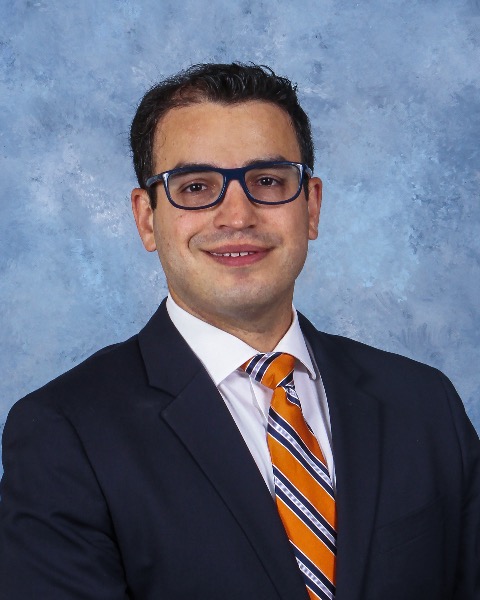Back
Poster, Podium & Video Sessions
Moderated Poster
MP16: Health Services Research: Quality Improvement & Patient Safety I
MP16-17: Multimodal Pain Control Utilizing Buprenorphine for Robotic Assisted Laparoscopic Prostatectomy: A Quality Improvement Comparison to Conventional Opioid Management
Friday, May 13, 2022
4:30 PM – 5:45 PM
Location: Room 228
Jo Ann Johnson, Ivan Muchiutti, Sonia Wraich, Aviram Assidon, Akin S. Amasyali, Mohammad Hajiha*, Donna Lien, Ruth Belay, Jonathan Maldonado, Ashley Li, Mohamed Keheila, Kanha Shete, Gary Stier, Leonard Soloniuk, Patrick Hogue, Brian Hu, D. Duane Baldwin, Herbert Ruckle, Loma Linda, CA

Mohammad Hajiha, MD
Endourologist
Loma Linda University Health
Poster Presenter(s)
Introduction: The purpose of this multidisciplinary study (urology, anesthesiology and surgical home) is to examine outcomes in patients who received standard mu opioid agonists (control) versus buprenorphine for perioperative pain while undergoing prostatectomy. Buprenorphine is FDA approved for postoperative pain and is uniquely a partial mu opioid agonist with potentially lower opioid side effects including constipation, respiratory depression, dysphoria, and substance abuse.
Methods: Two perioperative analgesic pathways were designed for patients undergoing robotic assisted laparoscopic prostatectomy (RALP). A quality improvement study with retrospectively collected data in a single institution over a 10-month period was performed. The control group (n=39) used standard mu opioid agonists and the intervention group (n=39) used buprenorphine. The patients were surveyed five days after surgery. The primary endpoints were pain scores at discharge and total morphine equivalent dosage (MED). The secondary endpoints included length of stay (LOS), subjective pain control, ileus and patient satisfaction using a Likert scale of 1 (strongly agree) to 5 (strongly disagree). Statistical analysis included Mann-Whitney U and Chi-square, with p<0.05 considered significant.
Results: Mean age (66.15 vs. 64.72, p=0.423), BMI (28.9 vs. 29.2, p=0.801) and race distribution (p=0.908) were similar between groups. There was no difference between buprenorphine and the control groups in LOS (1.2 vs. 1.3 days, p=0.414) and length of surgery (262 vs. 272 mins, p=0.501). Buprenorphine had lower reported pain scores at discharge (4.7) compared to the control (5.4) although this did not reach significance (p=0.250). While 73.7% of buprenorphine strongly agreed that their pain was adequately controlled in the hospital, this was 56.4% in the control (p=0.261). There was no difference in overall satisfaction at postoperative day 5 (p=0.312). When analyzing the primary endpoint of MED, buprenorphine received significantly less MED compared to control (15.77 vs. 48.75, p=0.012). There was no significant difference in incidence of ileus between buprenorphine and control (38% vs. 33%, p=0.637).
Conclusions: The use of buprenorphine reduced MED by 67.6% compared to the use of standard mu opioid agonists. This was achieved while maintaining higher patient satisfaction and pain control in buprenorphine compared to control.
Source of Funding: Loma Linda University Department of Urology and Department of Anesthesiology
Methods: Two perioperative analgesic pathways were designed for patients undergoing robotic assisted laparoscopic prostatectomy (RALP). A quality improvement study with retrospectively collected data in a single institution over a 10-month period was performed. The control group (n=39) used standard mu opioid agonists and the intervention group (n=39) used buprenorphine. The patients were surveyed five days after surgery. The primary endpoints were pain scores at discharge and total morphine equivalent dosage (MED). The secondary endpoints included length of stay (LOS), subjective pain control, ileus and patient satisfaction using a Likert scale of 1 (strongly agree) to 5 (strongly disagree). Statistical analysis included Mann-Whitney U and Chi-square, with p<0.05 considered significant.
Results: Mean age (66.15 vs. 64.72, p=0.423), BMI (28.9 vs. 29.2, p=0.801) and race distribution (p=0.908) were similar between groups. There was no difference between buprenorphine and the control groups in LOS (1.2 vs. 1.3 days, p=0.414) and length of surgery (262 vs. 272 mins, p=0.501). Buprenorphine had lower reported pain scores at discharge (4.7) compared to the control (5.4) although this did not reach significance (p=0.250). While 73.7% of buprenorphine strongly agreed that their pain was adequately controlled in the hospital, this was 56.4% in the control (p=0.261). There was no difference in overall satisfaction at postoperative day 5 (p=0.312). When analyzing the primary endpoint of MED, buprenorphine received significantly less MED compared to control (15.77 vs. 48.75, p=0.012). There was no significant difference in incidence of ileus between buprenorphine and control (38% vs. 33%, p=0.637).
Conclusions: The use of buprenorphine reduced MED by 67.6% compared to the use of standard mu opioid agonists. This was achieved while maintaining higher patient satisfaction and pain control in buprenorphine compared to control.
Source of Funding: Loma Linda University Department of Urology and Department of Anesthesiology

.jpg)
.jpg)